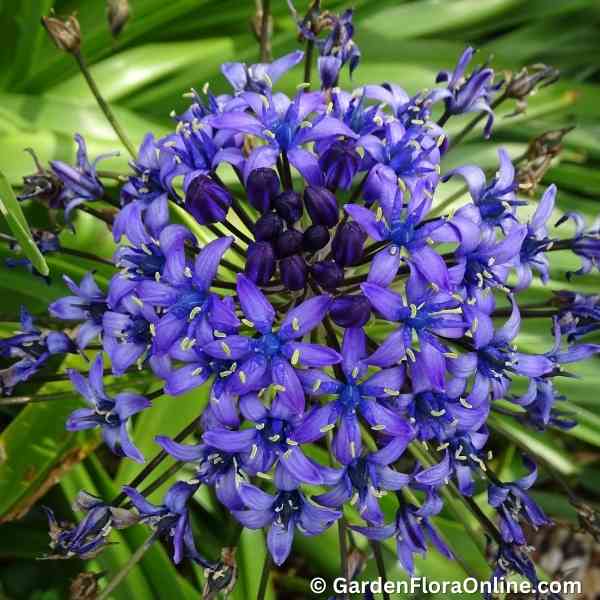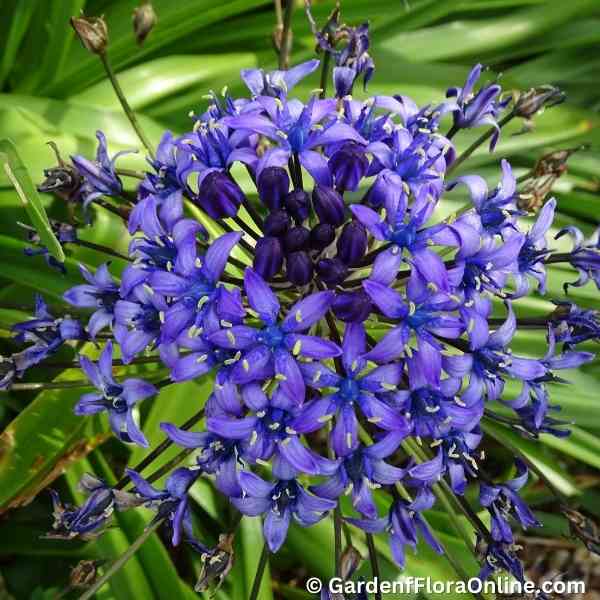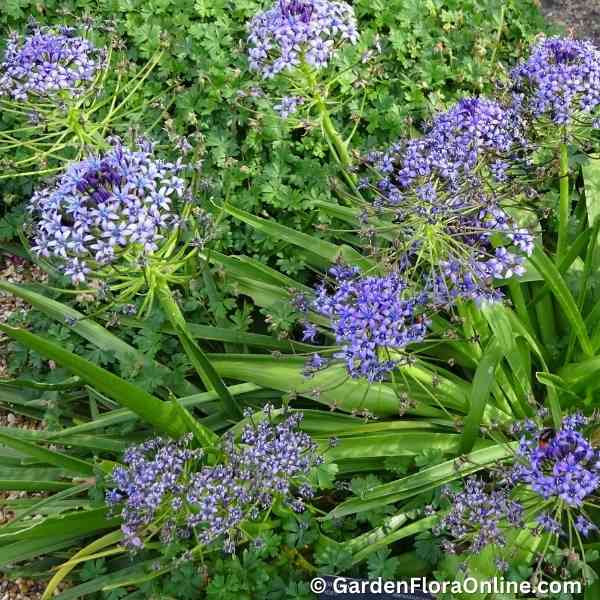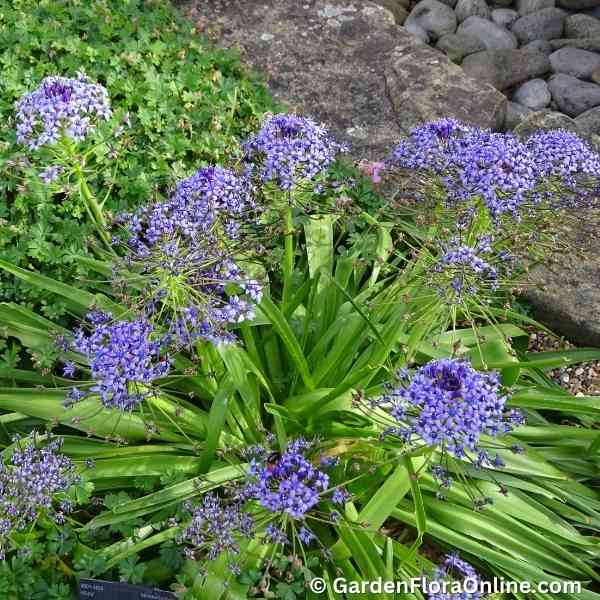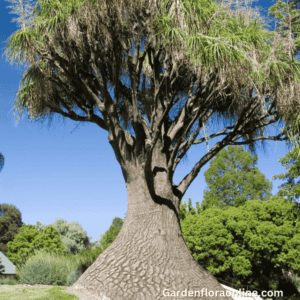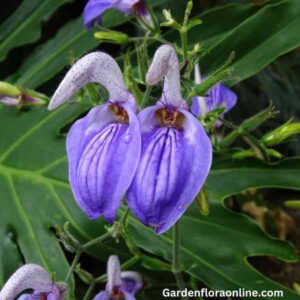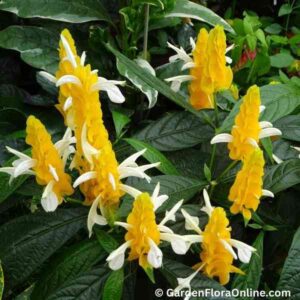Scilla peruviana (Portuguese Squill)
A perennial bulbous plant characterized by a compact rosette of 5–10 lance-shaped, upright dark green leaves at its base. In late spring or early summer, it produces striking inflorescences with numerous violet-blue, star-shaped flowers arranged in a dense, cone-like cluster, approximately 15 cm wide. These blooms, known for their long-lasting nature, remain vibrant for over three weeks. It thrives as a decorative feature, bridging the seasonal transition from late spring bulbs to early summer perennials. This species performs well in containers in colder climates and flourishes in garden beds in regions with mild winters, where it contributes vibrant color and architectural interest.
Cultivation: This compact plant typically reaches a height of 10–25 cm and spreads 15–20 cm wide. The bulbs remain dormant for a brief period after the foliage dies back. It thrives in fertile, well-drained, humus-rich soil and can be cultivated in either full sun or partial shade. During its active growth phase, provide generous watering, but ensure the soil remains dry during its summer dormancy. Watch for pests such as slugs and stem or bulb eelworms. Plant bulbs in autumn for optimal growth. Propagation is achieved through seeds or division. Note that all parts of the plant are toxic and can cause severe discomfort if ingested. Always handle with care, using gloves, and wash your hands thoroughly afterward.
Etymology: The genus name Scilla is derived from the Greek word skilla (σκίλλα), meaning “squill,” referring to a group of bulbous plants. The specific epithet peruviana comes from the Latin word peruvianus, meaning “of Peru,” though this is a misnomer, as the plant is native to the Mediterranean region. The name likely arose from a historical misunderstanding during its naming.

